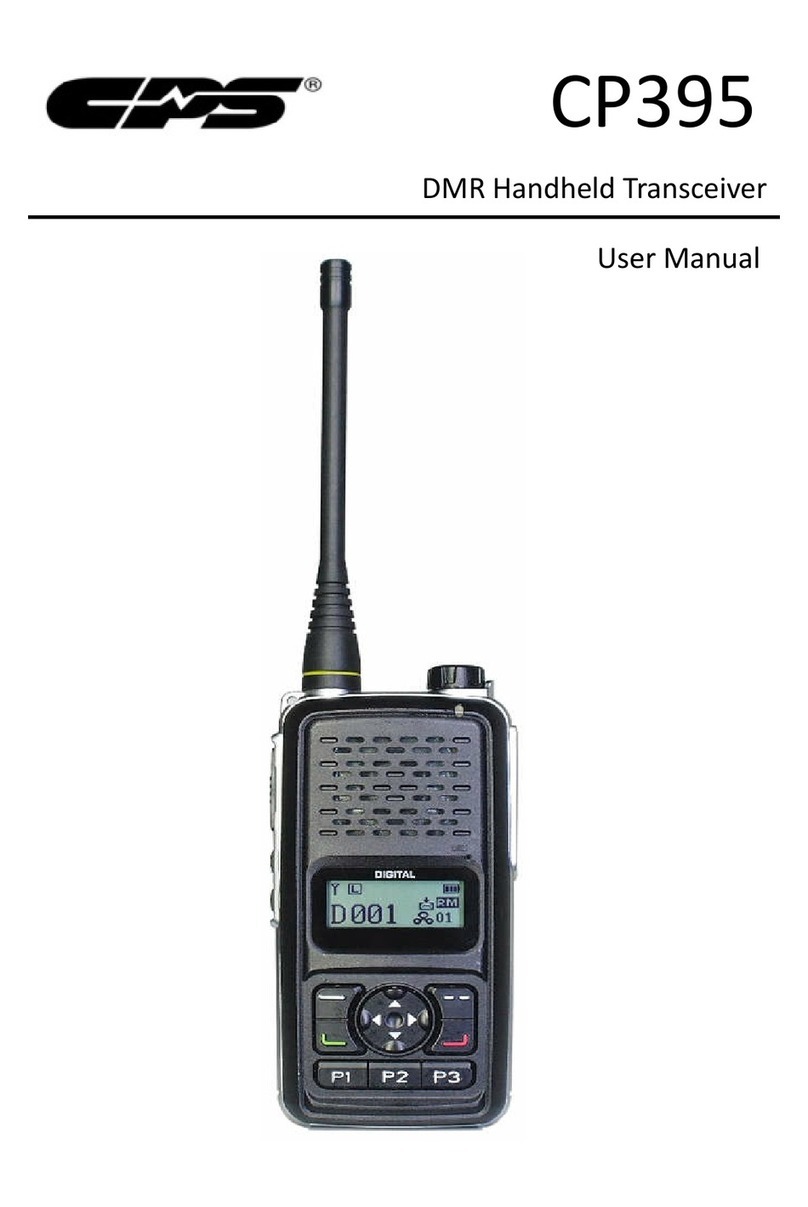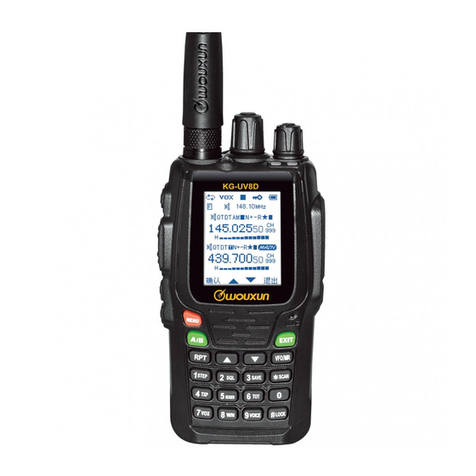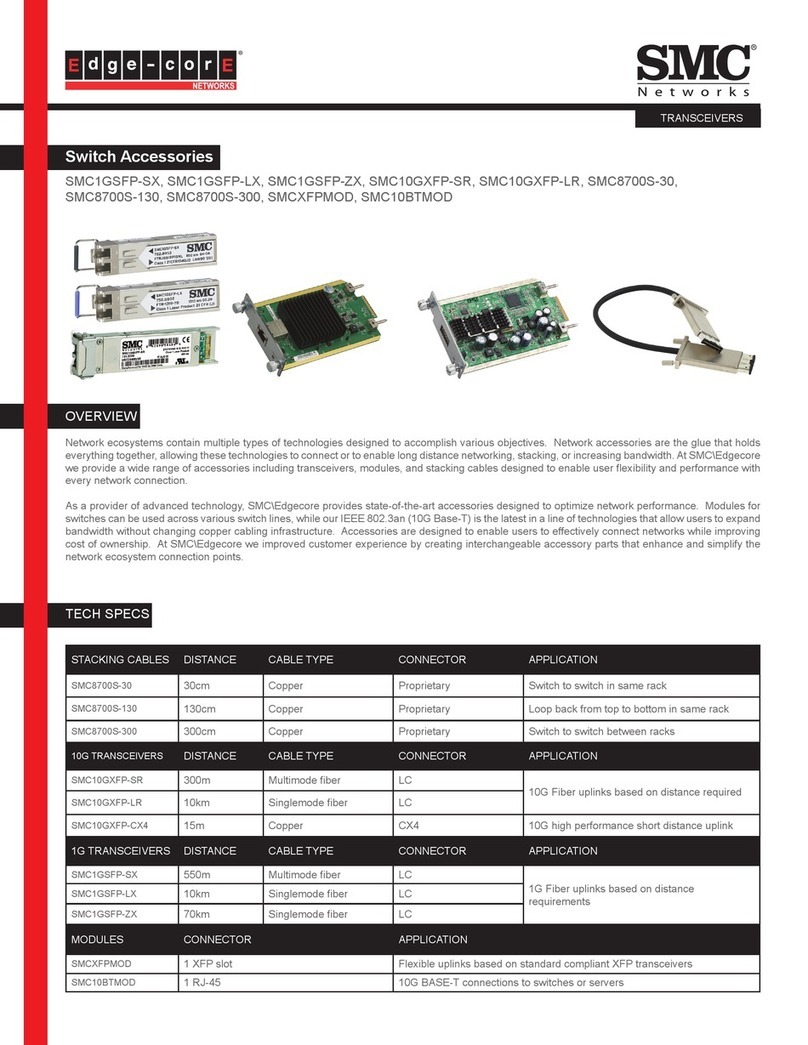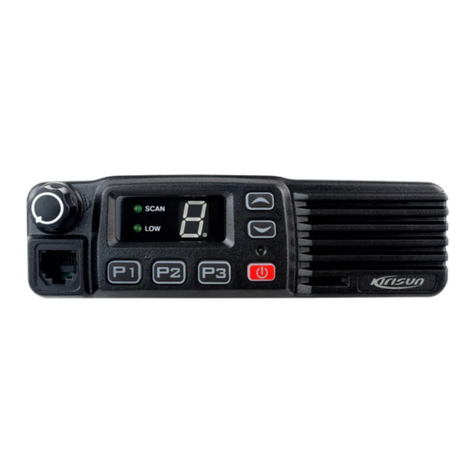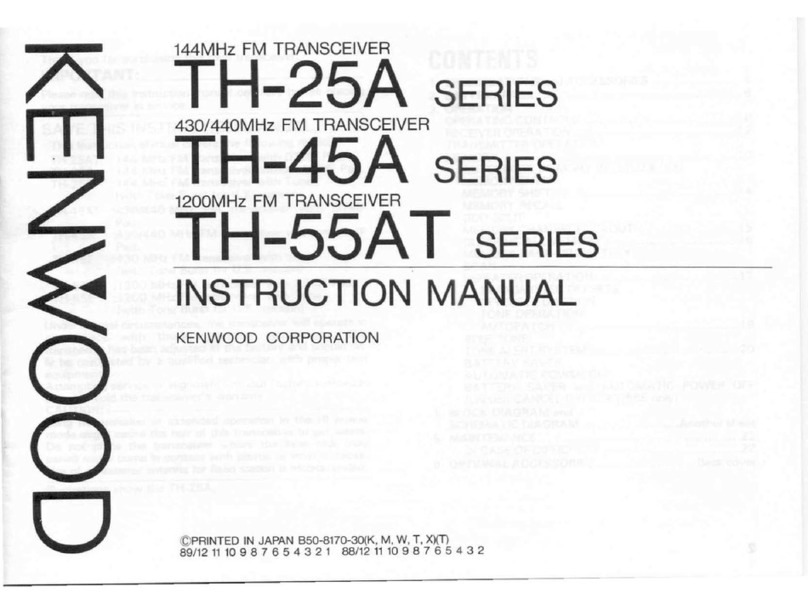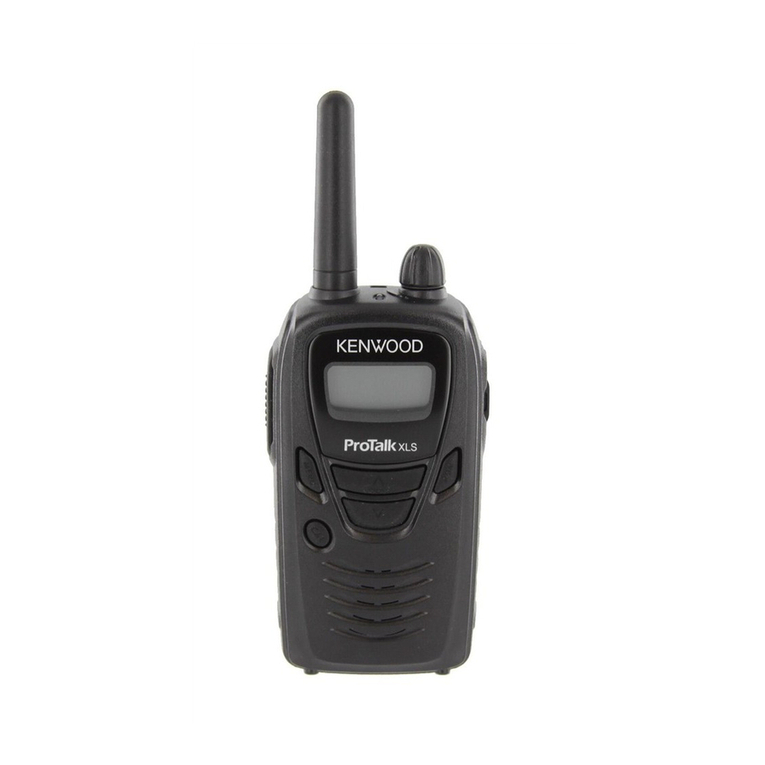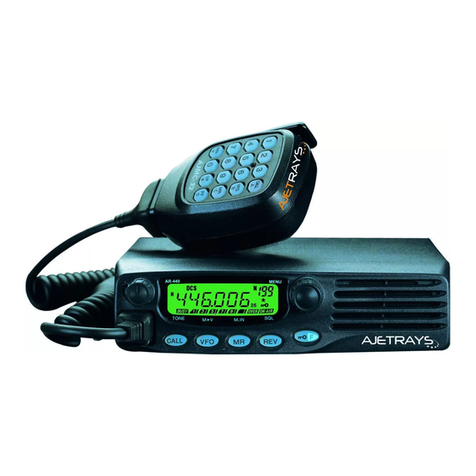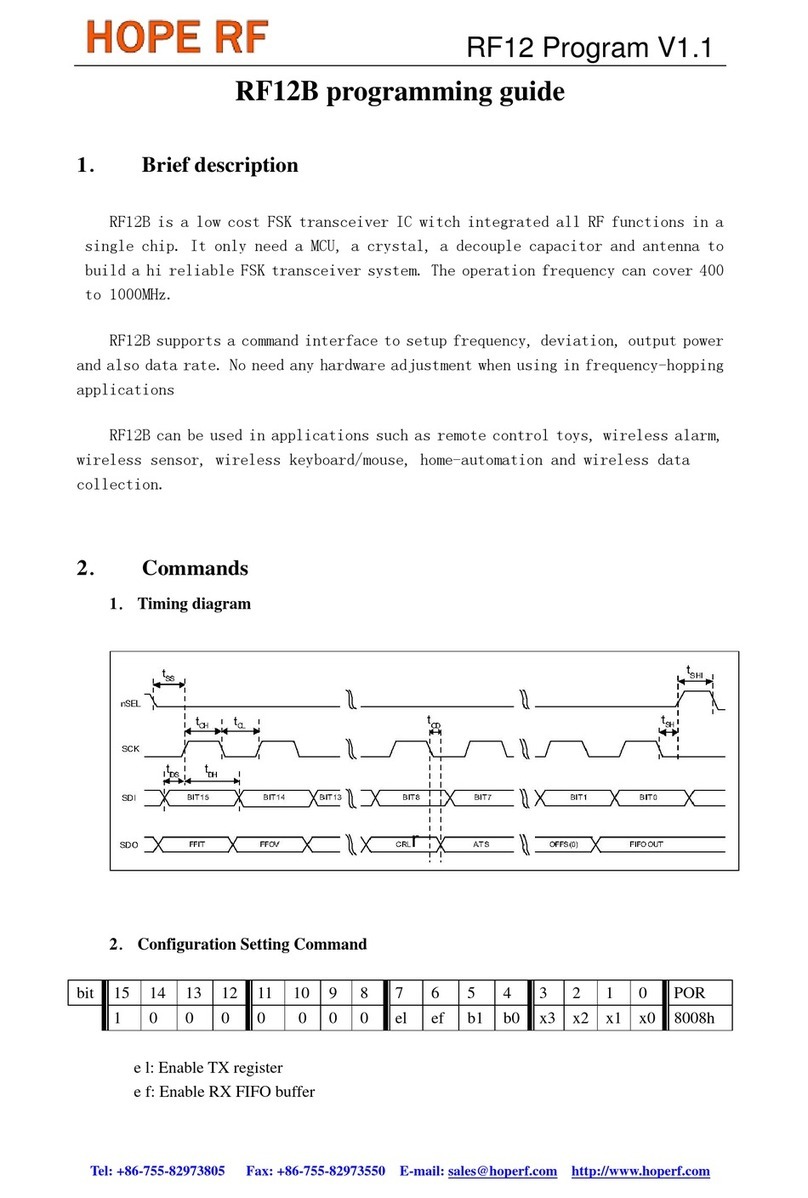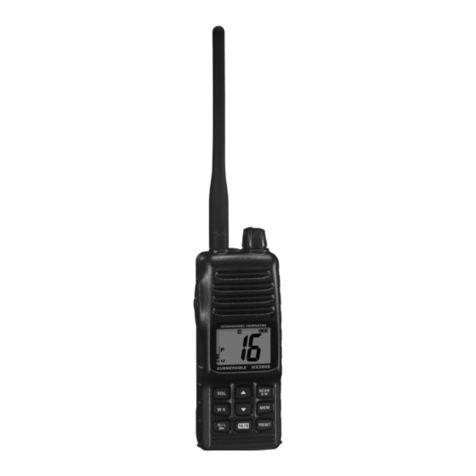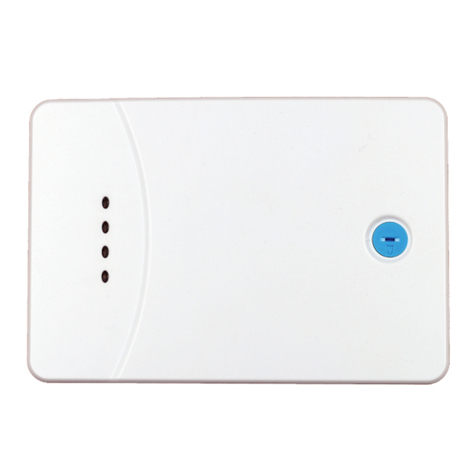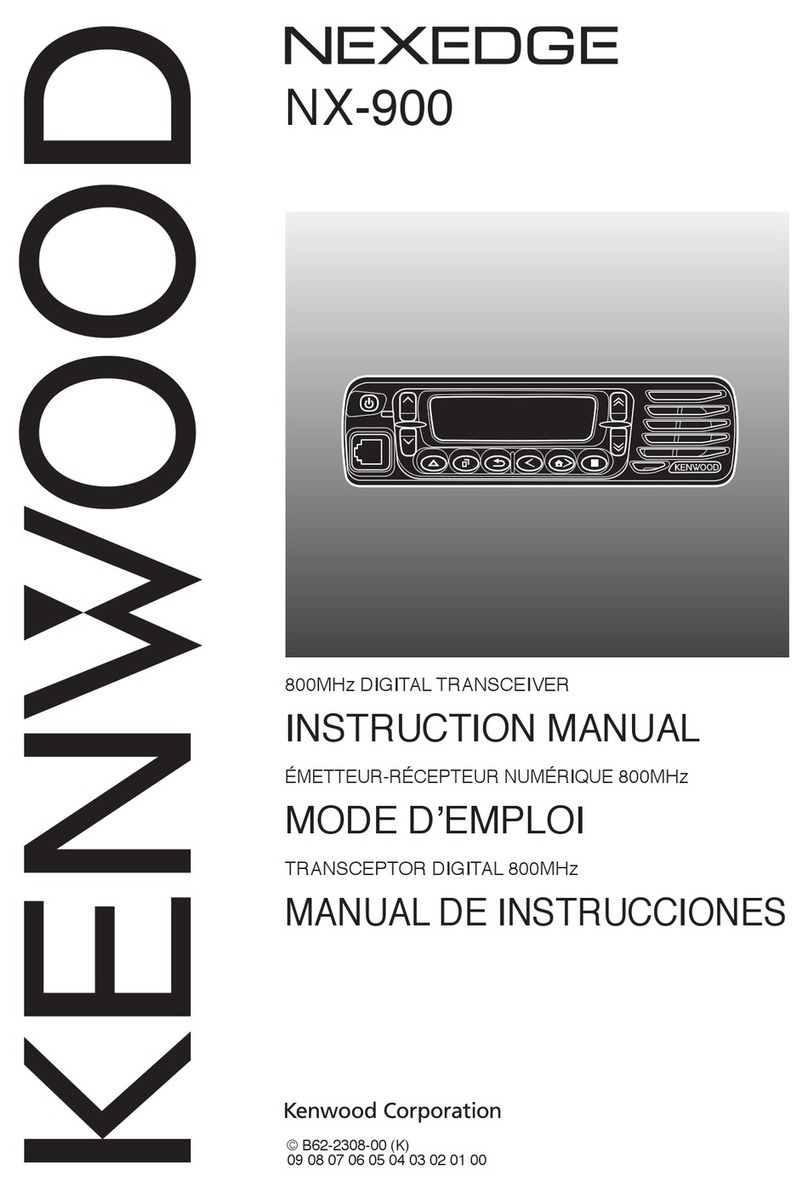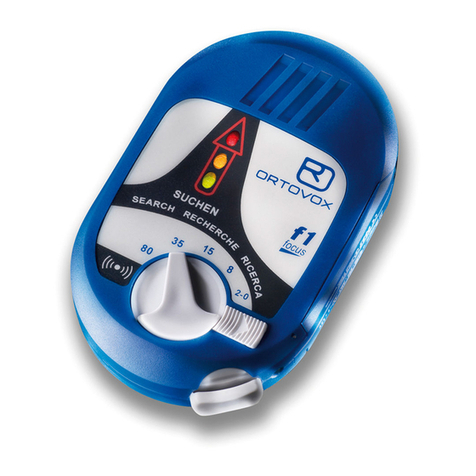SILTRONIX 1011B User manual

,.
.
The Siltronix Model 1011B SingleSidebandTransceiveris
designedto be usedin SSB,AM, or CWmodesin the 10
meteramateurradio band. In addition,the 1011Bisalsoa
tunablereceiverin the CBband.
Export modelsfor 208-220-240voltsareavailableonspe-
cialorder.
For 12-14voltsDCoperationin mobile,marineorportable
applications,aDCconverterunit, model14Aisavailable.It
attachesto the backof the1011B in placeof the ACpower
cordconnector. Its dimensionsareonly I~ x 3 x 4in.
Powerinput exceeds260 watts,P.E.P.,onsinglesideband,
60 watts on AM,and 180wattsonCW. TheModell 011B
includesautomaticgaincontrol(AGC),automaticlevelcon-
trol (ALC),andgrid blockkeying. The Model 1011B generates a single sideband signal by
meansof a crystal lattice filter, and the transceive operation
automatically tunes the transmitter to the received fre-
quency. Provisions are included in the transceiverfor oper-
.ationon either upper or lower sideband.
The internal AC power supply permits fIXed station or port-
able operation wherever 117 volts, 50-60 Hertz isavailable.
Downloaded by
RadioAmateur.EU

REAR PANEL CONTROLS AND CONNECTIONS
P.A. BIAS Potentiometer,AUX RELAY jack, CWKEY
jack, OutboardVFO Connector,HEAD PHONESjack,
FuseHolder,AntennaConnector,JonesplugPowercon-
nector,S-MeterZero.
FREQUENCYRANGES
28.0-28.5MHz
28.5-29.0MHz
29.0-29.5MHz
29.2-29.7MHz
26.96-27.26MHz(Receiveonly)
(
OTHERCONTROLSAND CONNECTIONS
Carrier BalanceControl. Located on bottom Cover.
VOXCONNECTOR. Located on side of the chassis.
POWERINPUT
SingleSideband,SuppressedCarrier:
260watts,P.E.P.minimum
CW: 180watts,DCinput
AM:(SingleSidebandwith Carrier):
60wattsDCinput
DISTORTioN
Distortionproductsdownapprox.30db.
UNWANTED SillEBAND SUPPRESSION.Unwanted
sidebanddownmorethan50db.
VACUUM TUBE COMPLEMENT
J' VI l2BA6 VFO Amplifier
V2 l2BE6 TransmitterMixer
V3 6GK6 Driver
V4 6LF6 PowerAmplifier
V5 6BZ6 ReceiverRF Amplifier
V6 l2BE6 ReceiverMixer
V7 l2BA6 FirstIF Amplifier
V8 l2BA6 SecondIF Amplifier
V9 l2AX7 ProductDetector/ReceiveAudio
VlO 6AV6 AGCAmplifier/Rectifier
VII 6GW8 AF Output
V12 l2BA6 100KC Calibrator
V13 6JH8 BalancedModulator
V14 l2AX7 MicrophoneAmplifier
CARRIER SUPPRESSION
Carrier suppression greater than 50 db.
RECEIVER SENSITIVITY
Less than 0.5 microvolt at 50 ohms impedance for signal-
plus-noise to noise ratio of 10 db. TRANSISTOR COMPLEMENT
Ql 2N706 Oscillator
Q2 2NS130Buffer
Q3 2N706 CarrierOscillator
AUDIO OUTPUTAND RESPONSE
Audio output, 3 watts to 3.2 ohm load. Responseessen-
tially flat from 300 to 3000 cps in both receive and
transmit. POWER REQUIREMENTS
117 VAC, S0-60Hz at 4 amps.(208-220-240volt, SO-
60 Hzat 2.Samps.,exportmodel). 12-14volts DC oper-
ationwith model l4-A converterunit pluggedinto back
of 10118. Currentdrain: 8 amps,receivemode. 12
ampsaveragewithvoicemodulation,2Sampsmaximum
in TUNEposition.
TRANSMITTER OUTPUT
Wide-rangePi-network output matchesresistiveloads
from 50to 75ohms.
METERING
Poweramplifiercathodecurrent0-400ma.ontransmit,
S-Meter0-70db over59 on receive,RelativeOutput in
TUNE-CW. DIMENSIONS
Height
Width
Depth
5*-in.
13in.
11in.
FRONTPANELCONTROLS
A.F. GAIN, R.F. GAIN, SidebandSelector,Function
Switch (CAL REC. TUNE-CW), Meter Switch, Tuning
Dial, Dial Set, SPOT Switch, ANL Switch, P.A. LOAD,
P.A. TUNE, Band Switch, CARRIER INSERTION,
DRIVER Control, MIC jack, MIC.GAIN. WEIGHT
Weight 241bs.
2
~,., =::.c
Downloaded by
RadioAmateur.EU

GENERAL MOBILE INSTALLATION
The installation of the Siltronix 1011B is not at all difficult,
and it involves only the placement of the transceiver in its
operational area (fixed or mobile); connection of power
(either 117 volts AC, or 12 volts DC); and the connection
of an antenna. The following paragraphs are therefore
devoted to the installation requirements involving micro.
phones, fIXed and mobile operation, and recommended
antenna types. Before actual installation, be sure to check
for possible shipment damage. Remove the cabinet (three
screws on each side), and check to make sure that all tubes
are fIrmly in place. Remove packing from around the P.A.
tube. -_.
DC CONVERTER, MODEL 14A
For 12-14volt DC operationin mobile installations,it will
be.necessaryto usethe 14Aconverter,whichplugsdirectly
into the backof the IO11Bin placeof theAC powercord.
FIXED INSTALLATION MOBILE ANTENNAS
The standard type mobile antennas designed for 10meters
or CB band will perform well with the 101lB. Generally
speaking, a full length 8 or 9 foot whip will bemore effi-
cient than the shorter inductively loaded types.
Wcate the 1011Bin an areawhichis wellventilatedand
whichprovidescompleteoperationalfreedomof the front
panelcontrois. Connectthe AC powercord to the 12 pin
Jonesconnectoron the rearpanel. If the 1011Bis a 117
volt model,plug the power cordinto astandard117volt
50-60Hz outlet havinga capacityof at least10amps. If
the 101IB is anExport model,it shouldbe first setto the
propervoltagetap: 208, 220,or 240volts,50-60Hz. Re-
movethe cabinet,andlocatetheterminalstripnearthe top
of the powertransformer. Thereare3 terminallugsanda
decalwhichindicatesthevoltagetapfor each. Connection
hasbeenmadeto the 220 volt tap at the factory. If your
supplyvoltageis 208 or 240 volts, unsolderthe red wire
andmoveit accordingly.
MICROPHONE
The microphone input is designedfor high impedance
microphonesonly. Thechoiceofmicrophoneis important
for good speechquality, and shouldbe givenseriouscon-
sideration. The crystallattice filter in the transceiverpro-
videsall the restriction necessaryon audio response,and
further restrictionin the microphoneis not required. It is
more important to haveamicrophonewith asmooth,flat,
responsethroughout the speechrange. The..microphone
plugmustbea standard%in. diameterthreecontacttype.
The tip connectionis for push-to-talkrelay control, the
ring connectoris the microphoneterminals,and thesleeve
is the common chassisground. The microphonemanu-
facturer's instructions should be followed in connecting
themicrophonecableto theplug. Eitherhand-heldor desk
type microphonewith push-to-talkcontrol will provide a
suitableinstallation. For VOX operation,thisfeaturemay
be disabled,if desired,byopeningthemicrophonecaseand
permanentlyconnecting the contacts which control the
microphone.
!i
FIXED ANTENNA
A standard PL-239coax connector plug will fit the antenna
connector on the rear panel of the 1011B. For feed line
runs up to 50 feet, RG58 or RG59 is recommended. For
longer runs, RG8 or RG11 produces lessline loss,particu-
larly on 10meters. CONTROLFUNCTIONS, FRONT PANEL
Any of the common antenna systemsdesigned for use on
the 10 meter amateur band will work well with the 1011B.
However, the amateur should consider an antenna system
which best fits his operational requirements. For example,
a rotatable beam antenna is usually bestsuited for DX oper-
ation. Methods for constructing antennas and antenna
tuners are described in detail in the ARRL Antenna Hand-
book and similar publications. It is recommended that
these publications be consulted during the design of any
antenna system.
POWERON-OFF SWITCH (On AF GAIN control)
Turns power supply On and OFF.
FUNC110NSWITCH(CAL.REC.TUNE-CW)
Calibrate -All voltages are applied to receiver.
Grounds cathode of V12. Dial adjustment canbe
made at any 100 KHz point on the dial.
Receive-All voltagesareapplied to receiver. Normal
position for Push-to-talk or VOX operation of
transceiver.

I';;:::j ~ ~
--~'~--0--~ "..;;:::
I~~
,
ALTERNATE
BRACKET
LOCATION
,...~ ~
<" I.~
.
-.; ,,:~~"""~
.
\\~~\'
f} #6 x .5/16 SCREWS,
'+ PLACES.
FRONTBRACKET
~
ALTERNATE
MOUNTING
,
.,#"
I
, .
, ,
~
TWO# 12-24
HEXHEAD
SCREWS~ ."_..~~ ./.'
~ ,...,.y
/:
JII
IIIIII
># 10 x 3/4
Mf:l' AL
8
SEAT SCRE\'lS
~ 4 PLACES .REAR BRACKET.
PLUGS INTO SLOT'
MADE BY FLAT WASHER
BETWEENCHASSIS AND
BOTTOMCOVER
.
TRANSMISSION
HUMP
TRANSCEIVER,BOTTOMVIEW
MOBILEMOUNTING,SIDE VIEW
FIGURE 1. MOBILE MOUNTING ON TRANSMISSION HUMP UNDER DASH
4

ANL Switch
Automatic Noise Limiter
SPOTSwitch
Insertscarrierfor AM tuning in RECposition.
MeterSwitch
Readscathodecurrent in P.A. CATHODEposition.
ReadsS-UNITSin S-METERposition. ReadsRELA-
TIVE OUTPUTin S-METERpositionwhenFunction
SwitchisinTUNE-CWpositi.on.
DIAL SET
Dial adjustmentcan bemadeat any 100KHz point
with Calibratoron.
MIC
Microphoneplugsinto thisjack.
CONTROLFUNCTIONS, REAR PANEL
P.A. BIAS
J. Adjustidling currentfor P.A. Tube. (40ma.)
A'JXRELAY.
12voltsDCfor auxiliary relaycontrol.
CWKEY
CWkeyplugsinto thisjack.
ANTENNA
Antenna feedline (50 .75 ohm) plugs into this
connector.
FUSEHOLDER
4ampfuse.
EXTOSC
Model508or51OXexternalVFOconnection.
HEADPHONES
Headphonesplug into thisjack. Disconnectsinternal
speaker.
S-METERZERO
AdjustS-Meterto zerowith antennadisconnected.
POWERCONNECTOR .
AC powercordplugsinto thisconnector. Model14A
DC converterplugs in to this connectorfor mobile
operation.
TUNE-CW-Transmitting circuits are energized.
CIS02 is disconnectedfrom ground,shifting the
carrierfrequencyinto the Cuterpassband.Carrier
is fully inserted. P.A. cathode resistor,R406is
switched in the circuit, reducing input power.
Transmitteris tuned in this position. CWtrans-
missionsmadein thisposition.
MIC. GAIN
ControlspotentiometerR1404in thegrid of V14A,
andcontrols amountof audio to thebalancedmodu-
lator.
R.F.GAIN
ControlsvariableresistorRS05,commonin thegrids
of ReceiverMixer,V6; RF amplifier,V5; LF. Ampli-
fiers,V7andV8.
A.F. GAIN
Controls potentiometerR1101 in grid circuit of AF
output, VII, andcontrolsaudiovolume.
MAINTUNING
Controls C1608 in frequency determining tank cir-
cuit of VFO.
DRIVER
ControlsC2Aand C2Bin plate tanksof transmitter
MixerandDriver.
P.A. TUNE
Controls C407 in Pi-network to tune fmal power
amplifier plate to resonance.
P.A. LOAD
Controls C408 in Pi-network to match impedance of
output load. Tunesinput to ReceiverRF. Amplifier.
BANDSWITCH
Switchestankcoilsandassociatedcapacitorsin VFO,
VFO Amplifier, Driver,andTransmitMixer.
SidebandSelectorSwitch
L5B-Receive andTransmitonLowerSideband.
USB-Receive andTransmiton UpperSideband.
AMREC. -Receive AM signals. (Insertcarrierwith
CarrierInsertioncontrolto transmit.)
~
;
;:
FIGURE 2. SILTRONIX MOPEL 10118, REAR VIEW.
5

0 Carefully adjust the DRIVER and the P.A. TUNE
controls for maximumreceivernoise.
Beforeconnectinganycablesto the Siltronix lOll Btrans-
ceiver,performthefollowingsteps:
<D LocatetheP.A. compartmentandremovethepacking
materialfrom theP.A.tube. NOTE
TheDRIVER control resonatesthe transmitter
driver stagesand the receiverRF amplifier
platecircuit. The P.A. TUNE andP.A. LOAD
controlsadjustthe input and outputcapacitors
in the transmitter power amplifier final plate
circuit, aswell asthe receiverRF amplifiergrid
circuit. Properadjustmentof thesecontrolsin
the receivepositionwill resultin approximately
resonantconditionsin the transmitterstages.
CD Rotate the Function Switch to the REC. position.
0 Rotate the AF GAIN control counterclockwiseto
operatethe powerswitchto the OFFposition.
(4) Rotate the CARRIER INSERTION control full
counterclockwiseto the minimumposition.
CONNECTIONS
-0) Connectawire from earthgroundto the groundstud
locatedon the rearof thechassis.Thisis not essen-
tial, butis stronglyrecommended. RECEIVERTUNING (88B)
Precisetuning of asinglesidebandsignalis veryimportant.
Do not be satisfiedto merely tune until thevoice canbe
understood,buttaketheextracareof settingthe dialto the
exactspotwherethevoicesoundsnatural. Aboveall,avoid
the habit of tuning so that the voiceispitchedhigherthan
normal. This is anunfortunate habit practicedby quite a
numberofoperators.
Q) Connecta 50 or 75 ohm antennafeed.lineto the
coaxialconnectoron rearpanel. A 50 ohm dummy
loadmayalsobeused.
0 Connectthe AC powercableto theJonesconnector
ontherearpanel.
(9 Connectthe AC powercableto the propervoltage
.source. The following points help to explainthe effects of mis-
tuning:
1. If youtunesothereceivedvoiceis higherthannormal
pitch, you will thentransmitoff frequency,and your voice
will soundlower thannormalpitch to the otherstation. He
will probably retune his dial to makeyou soun'dright. If
you keepthis up, you will graduallywaltz one another
acrossthe band. If both of you aremistuningto anun-
naturalhigherpitch, you will waltzacrossthebandtwiceas
fast. (And someonewill no doubtbeaccusedof frequency
drift.)
I WARNING_]
Dangeroushigh voltageispresenton theplate
of the power amplifier wheneverthe power
supplyisenergized.
RECEIVEOPERATION
CD RotatetheA.F. GAINcontrolclockwiseto aboutthe
3 o'clock position. The power switch will operate,
applying voltage to the transceiver. The dial and
meterlightsshouldilluminate.
2. Mistuning results in serioushannonic distortion on
thevoice,andshouldbequitenoticeableto theaverageear.
Somewill claim thatif they don't knowhowthe otherper-
son'svoiceactuallysounds,theycan'ttunehim in properly,
but thisis not true. With alittle practice,it will be fairly
easyto tell. Somevoicesarerelativelyrich in harmonics,
andare easierto tune in than a personwith a"flat" voice.
Also, a transmitter,whichis beingoperatedproperly with
low distortion will be easierto tunein thanone whichis
being over-drivenand is generatingexcessivedistortion.
Thereis no mistakingwhenyou havea stationtunedright
on the nose. It will soundjust like "AM" so to speak.
Mainly,avoidthe habitof tuningsoeveryonesoundshigher
than normalpitch, or like "DonaldDuck". Thisis incor-
rect,unnecessary,andsoundsterrible.
@ Waitapproximatelyoneminuteto allowthetubefIla-
ments to reachoperatingtemperature. During this
waitingperiod,performthefollowingsteps:
a. Rotate FrequencyRangeswitchto desiredrange.
b. RotateTuningDialto desiredfrequency.
c. RotateMIC. GAIN fully counterclockwise.
d. SetP.A.TUNEcontrolto 12o'clockposition.
e. SetDRNER controlto 12 o'clockposition.
f. SetP.A. LOADcontrolto 12o'clockposition.
g. RotateRF GAINcontrolto 3 o'clockposition.
h. PlaceSIDEBANDSELECTORswitchinUSBmode.
6

TRANSMITfER TUNING STEPS3. Your Siltroni.x 1011B will automatically transmit on
exactly the same frequency as the one to which you are
listening. CD Make the following preliminary adjustments:
4. If it is desired to receive on lower Sideband,rotate
the SIDEBAND SELECTOR switch to the LSB position.
RECEIVER TUNING (AM)
Referto the RECEIVEOPERATIONparagraphabove,and
performallthesteps.
CD After adjustingtheDRIVER andtheP.A. TUNEcon-
trols for maximuIJ\receivernoise,rotate the SIDE
BANDSELECTORswitchto the AMREC.mode.
a. Sidebandselectorswitchin USBposition.
b. Tuningdialto desiredfrequency.
c. Mic Gainatminimum.
d. CarrierInsertionto full CCW(MIN) position.
e. MeterSwitchinP.A. CATHODEposition.
f. FunctionSwitchinRECposition.
g. P.A. BIAS control on rear panel to full CCW
position.
h. Microphonewith press-to-talkswitchpluggedinto
Mic Jackonfront panel.
@ Pressthe Mic switchand observethe meterfor any
J' reading. MetershouldreadapproximatelyO. If the
meterdoesnotreadapproximately0, it indicatesthat
theCARRIERisnot completelybalancedout. LOCate
the CARRIERBAL hole on the bottomcover. With
the Mic switch pressed,use an alignmenttool and
adjustthe carrierbalancepot until the meter "dips"
at its lowestreading. This adjustmentshouldnotbe
requiredoften.
@ Rotate the tuning dial until an AM signalis heard.
-0 Pl~.'?!the SPOTswitchin the ON(UP)position. This
removesthe biasfrom the carrier oscillator,allowing
thecarrierto beheardin thereceiver.
0 Pressthe Mic Switchand with a screwdriver,adjust
the P.A. BIAScontrollocatedonthe rearpanel,until
themeterreadsapproximately40ma. P.A. Idlingcur-
rent. This point is indicated onthe meterscalebya
smalltriangularsymbol. Thepermissibleidling cur-
rentrangeis 30 to 50ma. If theidling currenttends
to creepupwardslightlywith warm-up,setit at30ma.
Excessivecreepindicatesthat theP.A. tube is gassy,
andmayneedto bereplacedsoon. This adjustment
shouldnot berequiredoften.
0 Zerobeatthecarrierwith thetuningdial.
@ Turnoff the SPOTswitch.
@ The AM stationshouldbe on frequency,with excel-
lentvoicereception.
TRANSMITTERTUNING
I CAUTIONI
READ CAREFULLY. BE SURE THAT YOU
UNDERSTAND AND REMEMBER THESE
NOTES WHENTUNING THE TRANSMITTER. 0 If thisis the first time you aretuningthe.transmitter,
setDRIVER control, P.A. LOAD control, andP.A.
PLATE control to the straightup (12 0'clock)posi-
tion. After gainingexperiencein tuning thesecon-
trols, they may be pre-setto previouslydetermined
positions.
I. Themost importantdetailto keepinmind whentun-
ing the transmitterportion of your Siltronix1011Bis that
the P.A TUNE control must be resonatedasquickly as
possible. NOTE !:1
2. TheP.A. tube is dissipatingallthe powerinput when
it is not in resonance,and canbe permanentlydamagedin
justa fewseconds. UPTO NOWTHETRANSMITTERHASBEEN
"IDLING" AND mERE HASBEENNOPAR.
TICULAR TIME LIMIT INVOLVED. THE
FOLLOWING STEPSAPPLY GRID DRNE,
AND REQUIRE C4UTION. OBSERVETHE
RECOMMENDED30 SECONDTIME LIMIT.
3. Onceresonancehas beenestablished,the P.A tube
canoperateat full powerinput for quite awhile,although
we recommend30 secondsasa safemaximum. But it is
mostimportant to realizethat the 30secondlimit assumes
that the P.A. TUNE control has beenimmediatelyreson-
ated. Thisruleappliesgenerallyto all transmitters. @ SetMETERSWITCHto the 5-METERposition. Ro-
tate FUNCTIONSWITCHto the TUNE-CWposition
and:
4. Do not tune more often than necessary. The P.A
tube will last for many months, or evenyears,with normal
operation, but excessivetuning will shorten tube life. a. Rotate DRNER control for maximum meter
reading.
.,

b. IMMEDIATELY rotate P.A. TUNE control for
maximum meter reading. -nus is the critical
"resonating" adjustment which must be done
quicklyto preserveP.A tubelife.
NOTE
The Transceiver will not modulate with the
Function Switch in the CAL position.
Rotate P.A. LOAD control for maximum. AM TRANSMITTER TUNING
d. Re-adjustP.A.TUNE control for maximum. This
adjustmentshouldberepeatedeachtime theP.A.
loadcontrolisadjusted. CD Tune the transmitter to full output 3Syou would fo,r
SSBtransmitter tuning.
@ RotateMIC. GAIN control to' full CCW(minimum)
position.
NOTE 0 Placethe SIDEBANDSELECTORswitch in the AM
REC.position.
With the Meterswitchin the S-Meterposition,
andthe FunctionSwitchin theTUNE-CWposi-
tion, the meterisreadingRELATIVE OUTPUT.
This RELATNE OUTPUTreadinghasno rela-
tionship with the true output of the trans-
mitter. To obtainatrue indicationof thetrans-
mitter output, place.tli.\;-lJeterswitchi.. P.A
CATHODE,androtate the Function Switchto
TUNE-CW. Normally,whenthe transmitteris
in resonance.the meter reading should be
approximately 300 ma. or higher. With high
line voltageand newtubesit may readashigh
as350 ma. Note thatthe 1011Boperatesatre-
ducedpower in the TUNE-CWposition. The
P.A. cathodebiasresistor,R-406,is in the cir-
cuit during TUNEandCWoperation. In voice
mode,the bias resistoris shortedout, and the
1011Boperatesat fullP.E.P.input rating.
0 Placethe Meter Switch in the P.A. CATHODE
position.
<D "'With the microphone press-to-talkswitch pressed,
rotate the CARRIER INSERTION control until
cathodecurrentis approximately125ma.
@ While talking in a normal tone of voice into the
microphone,increasethe MIC. GAIN control setting
until the meterbarelykicksupward. Thissettingwill
resultin excellentAMtransmissions.
CW TRANSMI1TER TUNING/OPERATION
CD Tunethe transmitterto full output asyou would for
SSBtransmittertuning.
<y InsertaCWkey in the Key Jackontherearpanelof
thetransceiver.
@ Theprecedingstepscompletethe TransmitterTuning
procedurefor SSB. Returnthe Function Switchto
theREC.position. 0 In CW operation, it is necessaryto switch the Func-
tion Switch to the TUNE-CW position \¥hen trans-
mitting, and backto the REC. position while receiving.
VOICE TRANSMISSION (SSB)
@ While receiving, the carrier oscillator frequency is
located 300 cycles outside the passbandof the crystal
lattice filter, thus providing asingleheterodyne note,
or "single signal" for CWreception. When transmit.
ting in CW mode, the carrier frequency- is moved
approximately 800 cycles higher, placing it well in-
side the passband. This frequency shift is termed
"Off-set CW transmit frequency", and avoids the
problems encountered when the receive and transmit
frequency are exactly the same. This is desirablefor
voice communication, of course, but when using the
CWKeying mode the receiver must be tuned off fre.
quencyseveralhundred cycles in orderto hear an
audio beat. By providing this shift automatically CW
operation is greatly simplified.
After tuning up asoutlined above,switch the Function
Switchto theREC.position. Placethe MeterSwitchinthe
P.A Cathodeposition. Pressthe microphonepress-to-talk
switch, and while speakinginto the microphone,slowly
rotate the MIC. GAIN control until occasionalpeakread-
ings of 100 to 125ma. are obtained. With mostmicro-
phones,the MIC. GAIN control will be setbetween9and
12 o'clock, but it mayvaryconsiderably.The ALCcircuit
will help.limit cathodecurrent,but turningtheMIc. GAIN
uptoo high will still produceflat-toppingandspurioussig-
nals,so it is important to hold it down. Themeterisquite
heavilydamped,andits readingwith averagevoicemodula-
tion may not look very impressive,but the voicepeaksare
going well over the 260 watt input power rating of your
Siltronix transceiver.
8
r""-_,. ,

GENERAL DISCUSSION followingmanner. CarrierisgeneratedbyQ3 CarrierOscil-
lator, whichisa Pierceoscillatorwith the crystaloperating
in parallelresonance.Thisstageoperatesin both thetrans-
mit andreceivemodes. Whentransmitting,theRF output
of the oscillator is injected into the control grid of the
BalancedModulator,VI3. This b'alancedmodulatoris a
beamdeflectiontube,andoperatessimilarto acathoderay
tubein thatthe electronbeamfrom thecathodeis deflected
to oneoutputplate orthe other by thechargeappearingon
the deflectionplates. The carriersignalfed to the control
grid of the balancedmodulator appearson both platesof
the output. The two platesareconnectedto Transformer
T130I. The deflectionplate DCvoltagesareadjustedby
meansof thecarrierbalancecontrol, RI30S, sothatthe RF
beingfed to the output plateswill cancelout, andtheout-
put fromTl.301 will bezero. Audio signalsfrom theMicro-
phoneAmplifier, VI4, areappliedasamodulatingvoltage
to one deflectionplate, and the two sidebandsresulting
from the sumanddifferencefrequenciesof the audio and
carriersignalsappearin the output of transformerTI30I.
Carriersuppressionis approximately 60 db down. The
Carrier Insertioncontrol limits the amountof carrierthat
~ beinsertedin AMand thus protectsthefinal amplifier
from beingoverdriven.
The Siltronix 1011B transceiverprovidessinglesideband,
suppressedcarriertransceiveoperation,and generatesthe
singlesidebandsignalbymeansof acrystallattice filter. To
permit a logical discussionof this mode of operation,cer-
taindefinitionsarenecessary.
h1 a normal AM signal(doublesidebandwith carrier),a
radiofrequencysignalismodulatedwith anaudiofrequency
signal. This is consideredby manyto be merelya caseof
varying the amplitude of the carrierat an audiorate. hi
fact, however,thereare actuallysideoandfrequenciesgen-
erated,whicharethe resultsof mixingtheRFandtheA.F.
signals. Thesesidebandsarethesumof, andthe difference
between,the two heterodynedsignals. In the detection()f-
this conventional AM signal,the two sidebandsaremixed
with the carrierto recoverandreproducethe audiointelli-
gence. Thisis aninefficientmeansof transmission,because
only 25 percentof the transmittedpoweris usedto trans-
mit intelligence. Thereareotherattendantdrawbacksalso.
The bandwidthof AMvoice transmissionis approximately
6 KHz,whiletheactualdemodulatedaudioisonlyapproxi-
mately 3 KHz. The result is inefficient useof the fre-
quencyband,and overhaIf of theallottedbandisunusable
dueto heterodynes,interference,andcongestion.. Thedoublesideband,suppressedcarriersignalis thencou-
pled from the secondarywinding of Tl30l to the crystal
filter, which suppressesthe lower sideband,and permits
only the uppersidebandto befedto the First IF Amplifier
V7. The carrier frequencyis generatedat approximately
5500.0KHz, nonnal sideband.Withtheoppositesideband
crystal, the carrier crystal frequencywill be 5504.6 KHz,
and this positionsthe doublesidebandsignalonthe other
sideof the filter responsecurve,attenuatingthetIpperside-
bandby atleast50db.
h1 the single sideband,suppressedcarriermode of trans-
mission,only one of the sidebandsignalsis transmitted.
The othersidebandand the carrieraresuppressedto negli-
giblelevel. h1addition to increasingthe transmissioneffi-.
ciency by a factor of four, single sidebandeffectively
doublesthe numberof stationsor channelswhichcanbe
usedinagivenbandof frequencies.
It should be rememberedthat in the singlesideband,sup-
pressedcarrier mode of transmitting,theunwantedside-
bandand carrier are only suppressed,not entirelyelimin-
ated. Thus, with a transmittedsignalfrom a transmitter
with 50 db sidebandsuppression,the other or unwanted
sidebandwill be present,and will be transmitted,but its
levelwill be 50 db belowthe wantedsideband. Whenthis
signalis receivedat a levelof 20dbover59,theunwanted
sidebandwill be presentat a level of approximately55.
The sameis true of carriersuppression.With carriersup-
pressionof 60 db,and asignallevelof 20 dbover59,car-
rier will be presentat a levelof approximatelyS3to S4.
Q1, the VFO 2N706 Oscillator,operatesin the common
baseconfigurationasaColpittsoscillator. Q2,the buffer,is
usedfor isolation. Theextremelygoodregulationachieved
throughusingthe Zenerdiode regulatorD1712acrossthe
biassupplyvoltage,alsocontributesto thestability.
TheVFO in the ModellOllB exmbitsextremelygoodsta-
bility after the initial wann-upperiod. Drift from a cold
start will belessthan 2 KHz duringthe flIst hour. After
theinitial wann-upperiod,drift will benegligible.
Thesinglesideband,suppressedcarriersignalfrom the First
I.F. Amplifier isfed to the TransmitMixer,V2, whereit is
heterodynedwith the VFO signal. The resultantsignalat
the desiredtransmit frequencyisamplified by the Driver,
V3;andthePowerAmplifier,V4. Thesignalfrom theVFO
Amplifier is initiated in the transistorizedVFO/Buffer cir-
cuit QI andQ2. Thesignalfrom theVFOisroutedto the
VFO Amplifier,and ismixed with thesinglesidebandfrom
the IF amplifier,resultingin output in the 10 meterband.
Whenthe transceiveris in the TRANSMITmode,the gain
For the following discussionrefer to the schematicdia.
gram,andto Figures3,4, and5.
SIGNAL GENERATION
Whenthe push-to-talk switch on the microphone is pressed,
the transmitter portion of the transceiveris activated, and it
generatesa single sideband,suppressedcarrier signal in the
9
'. "-.j .., ,. .,-,,., ,

~
I I
~
V4
POWER
AMP
6LF6
V2
TRANS
MIX
12BE6
V3
DRIVER
6GK6
L
ANT
~
j- I V7
FIRST
IFAMP
12BA6
V10
AGC/ALC
AMP
6AV6
Q3
CAR OSC
2N706
Vl
VFO AMP
12BA6
PI NET
L_- __I
I I
I
V14B
AF AMP
1/212AX7
V14A
MIC AMP
1/2 12AX7
V13
BAL MOD
6JH8
XTAL
FILTER
5500 Xc
L ...:.:.:...,;;j" ..
FIGURE 3. BLOCK DIAGRAM, TRANSMIT MODE
~
I I
I
I
V9A
PRODUCT
DET
1/212AX7
VB
SECOND
IFAMP
12BA6 LL___J I. i
1---_J ANT
~
V9B
REC
AFAMP
1/2. 12.AX7
03
CAR OSC
2N706
V7
FIRST
IFAMP
12BA6
V1
VFO AMP
12AU6
PI NET
-,t
~~
XTAL
FILTER
5500 Kc
V6
REC
MIXER
12BE6
V5
REC
RFAMP
6BZ6
I
~~~
FIGURE 4. BLOCK DIAGRAM, RECEIVE MODE
10
Downloaded by
RadioAmateur.EU

of the First IF Amplifier is controlled through the Auto-
matic uvel Control (ALC) network (using the AGC Ampli-
fier VIO) to control the gain of the stagein responseto the
average input power to the Power Amplifier. This ALC
system \vill compensate for any extremely strong input sig-
nals, but does not completely eliminate the necessity of
proper adjustment of the Mic. Gain Control. This feature
will help prevent the transmitter from flat topping and spur-
ious emissions, but considerable distortion may occur if the
Mic. Gain Control is not properly adjusted. Refer to Oper-
ating Instructions.
f CAUTION 1
CARE MUST BE EXERCISED WHEN TUNING
FOR THE 100 KHz HARMONICS OF THE
CALIBRATOR. SEVERAL SIGNALS MAY
BE HEARD, ALTHOUGH THEY WILL BE
DEFINITELY WEAKER THAN THE COR.
RECT HARMONICS.
TRANSMIT AND RECEIVE SWITCHING
TUNE AND CWOPERATION Transmitand receiveswitchingis performedby relayKI.
In TRANSMIT,only thosetubes that operatein the trans-
mit mode ar~ operative,all othersbeingbiasedto cutoff
throughthe relaycontacts. In RECENE, with the relays
de-energized,the tubes that are used only in transmitare
cut off-in the samemanner. RelayKl whende-energized,
feedssignalsfrom the output Pj-netwcrk-+~.the receive~.
Note that relay KI will not operate when the BAND
SWITCHcontrolis in "CB" position.
Normally,the frequencyof the carrieroscillatorisapproxi-
mately300 Hertzoutsidethe 6 db passbandof the crystal
lattice filter. In TUNE position,the frequencyof the car-
rier oscillatoris movedapproximately800Hertzto placeit
well within the passbandof the crystallattice filter. A
similarprocedureis followed for CWto allow full carrier
'ootput during-cwoperation.
RECEIVE POWERRATING
In RECENE position,or at allYtime whenthe transmitter
is not in TRANSMIT,all circuits usedin transmittingare
disabledthrough the relay controlled circuits, KI. The
relay is energizedfor transmittingandde-energizedfor re-
ceiving. One contact, when de-energized,allowssignals
from the transmittingtank circuitandantennato befedto
the ReceiverR.F. Amplifier, V5; wherethey areamplified
and thenfed to the controlgrid of the ReceiverMixer,V6.
The local oscillatorsignalfrom the VFO Amplifier is now
usedto heterodynethe receivedsignalto the IF frequency.
All I.F. amplification is accomplishedat this frequency,
nominally 5500.0 KHz, through IF amplifiersV7 andVB.
In the ProductDetector,V9A, the IF signalisheterodyned
Withthe carrierfrequencygeneratedby CarrierOscillator,
Q3. Theresultantaudiois thenamplified by V9B, which
thencouplesto theAGCamplifier,VIO,andtheaudioout-
put stage,VII.
The Siltronix 1011Bis capableof 180watts,P.E.P.input
under steady state two-tone test conditions. The peak
envelopepower, when voice modulated, is considerably
greater,typically 260watts,ormore.
The built-in power supplyproducesano-loadplatevoltage
of approximately 880volts. Under TUNEconditions, or
CWoperation,this voltagewill dropto approximately680
volts. Understeadystatetwo-tonemodulation,thevoltage
will dropto approximately710volts. If the powerampli-
fier idling current is 40 ma.,'andthetwo-tonecurrent,just
before flat-topping,is 200ma., the peaktwo-ton. current
will be 300 ma. Undertheseconditions,the P.E.P. input
will be 710volts times300ma..= 213watts. Undervoice
modulation,becauseaveragepowerisconsiderablyless,the
poweramplifierplateandscreenvoltageswill bemaintained
higher,evenduringvoicepeaks,by the powersupplyfilter
capacitors. Peakplate currentwill thereforealsobehigher
thanwith two-tonetestconditions. Undertypicaloperating
conditions, peakplate current before flat-topping will be
350 ma. at 800volts, to result in an input of 280watts
P.E.P. Readingsof cathodecurrent will not reflect this
powerinput, however,becauseof the dampingin thecath-
odecurrentmeter. Cathodecurrentreadingsundernormal
voice input should not averagemore than 100to 120ma.
FREQUENCYCALIBRATION
Frequency calibration of the Model 10II B is in 5 KHz in.
crements. Dial accuracy and tracking are quite good, but
caution must always be observedwhen operating nearband
edges. Measuring the frequency with the 100 KHz cali.
brator when working nearband edgesis recommended.
DIAL SET POWERAMPLIFIER PLATE DISSIPATION
A DIAL SETcontrolhasbeenprovidedso that dialadjust-
ment canbemadeat any 100KHz point onthedial. With
calibratoron, setthe dial to any loa KHz point closestto
the frequencyyou wishto work. Now adjustDIAL SET
control to zero-beattheVFO with the 100KHz Calibrator.
Thisprovidesgreateraccuracyof dialreadout.
Thereis often amisunderstandingaboutthe plate dissipa-
tion of tubesoperatedasABI amplifiersundervoicemodu-
lation. In the Siltronix 1011B,while in the transmitmode,
and with no modulation,the platevoltagewill beapproxi-
mately 830volts, the plate current40ma.,and the power
input 33watts.

Authoritiesagreethattheaveragevoicepoweris 20to 20db
belowpeakvoicepower. Normally,somepeakclippingin
the power amplifier canbetolerated,anda peak-to-average
ratio of only 6 db may sometimesoccur. Undersuchcon-
ditions,the averagepowerinput will be 80watts,andaver-
ageplatecurrentwill be 100ma. Withpoweramplifiereffi-
ciencyof 65percent,plate dissipationwill beapproximately
26 watts. The6LF6 is rated at 40 watts,continuousduty
cycle,in normal TV service."n1USit canbe seenthat under
normal operatingconditions, the Power Amplifier tube in
the101lB isnotbeingdrivenveryhard.Note, however,that
propermodulationlevelmustbemaintainedby correctset.
ting of Mic.Gain,andthat the lengthof time in TUNEposi-
tion mustbelimited to not more than30 secondsata time.
5498 SSOO SSOZ 55)4 SS~ KC
0 -
I~-
608-
-
--
ZOOS
--it-i
---
40DB- -
-
--,;'1t-
60 DB. -
--
80 DB- iTI
-
0--. -
IZ KC
100D8-J-~--fIE- --
FIGURE 5. CRYSTAL FILTER CHARACTERISTICS
12

Dle alignment procedures presented in this section arerou-
tine touch-up procedures for all tuned circuits and other
adjustments. It is recommended that the procedures be
performed in the order presented. However, if complete
realignment is not required (as may be the case when just
one tube is replaced), perform just those procedures re-
quired. Refer to Figures6 and 7 for component placement.
2. Thealignmentof transmittercircuits involvestheadjust-
mentof tuned circuits in the VFO Amplifier, VI; the
TransmitMIXER, V2; and the DRIVER stage,V3. It is
recommendedthat a 50 ohm dummyloadbeconnected
to theantennajack duringthisseriesof adjustments.
CD Set the tuning dial to approximately ~8.3MHz,
andthe DRNERcontrol at 12o'clock.
RECEIVER AliGNMENT
Receiveralignmentinvolves only the adjustmentof the
SecondI.F. coil. TheR.F. coils whichaffect receiverper-
formancearealsousedin the TRANSMITmode. Theirad-
justmentiscoveredunder"TRANSMITTERAUGNMENT".
@ SetP.A. LOAD control to 9 0'clock.
0 SetMETERswitchto P.A.CATHODE.
@ PressMic. button. Checkidling CUlTent.It should
be on the "delta" symbol when the CARRIER
~. BALANCE control is nulled, and the CARRIER
INSERTION control is fully counter clockwise.
AdjustP.A.BIAS controlif necessary.
Q) After allowing approximatelyfive~i"utes for warm-
up,tunethe receiverto themiddle of thebandand on
a "clear" frequency. 0 WithMic. button pressed,adjustCARRIER BAL-
ANCE control for slightincreasein meterreading,
50 to 60ma. AdjustP.A.TUNE c{Jntrolto reson-
ance(dip).
0 Adjust the P.A. TUNE,P.A. LOAD,AND DRIVER
controlsfor maximumnoise.
CD Adj~st the SecondI.F. coil (LB01) for maximum
backgroundnoise. CD Adjustcoils LI0l, L201,and 1301, for maximum
reading. Whenreadinggoeshigherthan80ma.,or
so, adjust CARRIER BALANCE control for 60
ma.again.
S-METERADJUSTMENT
With the antennadisconnected,R.F. GAIN control fully
clockwise,and METER switch in S-METERposition, set
R70S,located on the rear panel,for zero meterreading.
Makesurenolocalsignalsarebeingreceived.
@ Adjustcoilscarefullyfor maximumpeak. Exercise
caution with CARRIER BALANCE control. Do
not exceed 100ma. readingfor more than a few
seconds.BesureP.A. TUNE control is resonated
(adjustedfor "dip" in meterreading).
TRANSMITTER ALIGNMENT 3. PowerAmplifier Neutralization.
To adjustthePowerAmplifier Bias: 0 After allowingapproximatelyfive minutesfor
warm-up,tune transmitterto approximately283
MHz.
Switch METER switch to P.A. CATHODE posi-
tion.
Rotate CARRIER INSERTION control fully
counter clockwise. .
After allowing approximately five minutes for
warm-up, key the transmitter with the microphone
switch. Without speakinginto the microphone, ad-
just the Carrier Balance control on the bottom
cover for aNull.
@ SettheP.A. LOAD controlto 9 o'clock.
@ SetMETERswitchto P.A.CATHODE.
0" Key the transmitter with the Mic. button, and
without speakinginto the microphone,adjustthe
CARRIER BALANCE control for a reading of
approximately 100 ma. Quickly adjust the
DRNER control forapeak. Quicklyre-adjustthe
CARRIERBALANCE control to 100ma. if it in-
creasedto ahigherreading.
Again key the transmitterwith the microphone
switch,andwithout speakinginto themicrophone,
adjust the P.A. BIAS control on the rear panel
until the meter reads40 ma. of idling current.
Thispoint is indicatedonthemeterby the"delta"
symbol.
0 With the Mic. button still pressed,rotate the P.A.
TUNE control through its rangefrom 9 o'clockto
3 o'clock. You will note apronounced"dip" in
meterreadingatresonance.Observeany tendency
]3
:'t ,',',' ",'" -'~-".-

FIGURE 6. SILTRONIX MODEL 10118 TOP VIEW.
14
Downloaded by
RadioAmateur.EU


for themeterto "peak" abovethe 100ma. plateau
on eithersideof resonance.If thereis sucha peak,
adjustC40l, the P.A NEUTRALIZING trimmer
to suppressthepeak. Whenproperly neutralized,
the meter reading will hold steadily at 100ma.
exceptfor the sharpdip at resonance,but there
will beno peakabovethe 100ma.level.
0 Increasegain of audio generatoruntil the watt-
meter reads40 watts. Sweepgeneratordownto
200 Hertz and adjust the USB carrier oscillator
trimmer,C1S03,for areadingof 10watts.
CD Switchto the LSBposition. Adjust the LSBcar-
rier oscillator trimmer, C1S0l, for a readingof
10watts.
<D Key the transmitterwith the Mic. button, andre-
adjustthe CARRIER BALANCEcontrolfor mini.
mum PowerAmplifier current. PowerAmplifier
idling currentshouldbeonthe"delta" symbol. If
not, repeatthe Power Amplifier Bias adjustment
described in TRANSMITTER AUGNMENT,
STEP1.
@ Re-checkwith audio generatorsetat 1500 Hertz
and 40 watts. Sweepdownto 200 Hertzandre-
adjust carrier oscillator trimmers, if required,for
10watts.
4. CarrierFrequencyAdjustment.
A dummyload wattmeterand audio generatorare reo
quiredfor thisadjustment.
-~-~.. .~..'--0 After allowing afiveminute warm-upperiod,tune
the transmitterto approxjmatley28.3MHz.
@ Key the transmitter with the Mic. button, and
adjustthe CARRIERBALANCEcontrol formini-
mumpoweramplifiercurrent.
S. VFO Calibration.
Mter allowingapproxjmatelyfive minutesfor warm-up,
tune the dial to the 200KHz incrementfor anyof the
10 meterrangesto be calibrated. For CBcalibration,
tune the dial to the 27,100KHz increment. Usingthe
~100 KHz crystal calibratorasa signalsource,tune the
signalfor zerobeatandnotethecor!espon~~'!g-dialread.
ing. If the signaldoesnot zero beaton thedesireddial
increment,locatetheVFO coverandcarefullyadjustthe
correcttrimmeruntil it does.
Usean insulatedalignmenttool for adjustment. Accu-
racyin otherpartsof the bandswill be quite good,but
rememberthat the 1011Bis not to beconsideredafre-
quencystandard;Becautiouswhenoperatingnearband
edges.
0 Insert 1500Hertzof audio from anaudiogenera-
tor into the Mic. Jackon the front panel. Adjust
the gainof the audio generatorandtheMic GAIN
control(R1404)until thewattmeterreadsapproxi-
mately10to 15watts.
6. Troubleshooting.
Theinformationcontainedin Figures6 and 7, together
with thevoltageandresistancemeasurementsin Table1,
andthe information in Table2, shouldbesufficientfor
most troubleshootingby the averagelicensedamateur
radiooperator.
@ Adjustthe FirstI.F. coil, L701,for maximumout-
put. Adjust both slugsof the balancedmodulator
transformer,T1301,for maximumoutput.
16

TABLE 1. VOLTAGE AND RESISTANCE MEASUREMENTS
Voltage measurements were taken using a HEWLETT PACKARD Model 410C/B VTVM. Resistance measurements were
taken using a SIMPSON MOdel 260 Volt-Ohm meter.
SocketPinNumbers
TUBE
TYPE R =Rec.
T = Trans. 123s
46789
VI 12BA6
VFOAmp. R Volts
T Volts
Ohms
-.6
-.6
1.2K
0
0
0
0
0
0
0
0
0
0
0
0
12.6AC 45
12.6AC 50
0.2 0
45
50
.
,
g
0
0
I 0
35K
V2 12BE6 RVolts
Trans.Mixer TVolts
Ohms
-1.2
-1.0
lOOK
12.6AC
12.6AC
.02
250
250.
V3 6GK6
Driver RVolts
TVolts
Ohms
-6.7
-6.7
lOOK
0
0
0
0
0
0
0
0
0
-2
135
IlK
NC
NC
NC
115
0
40K
255
265
*0
225
0.2
0
0
0
V5 6BZ6
Rec.RF. 0
0
0
6.3AC
6.3AC
0.1
63AC
63AC
03
255
255
14K
0
0
0
V612B£6
Rec.Mixer RVolts
TVolts
Ohms
-3.7
-3.4
200K
12.6AC
I 12.6AC 220
12.6AC 12.6AC 220
0 0 20K
110
0
20K
0
0
70K
0
0
0
0
0
0
-.25
-.25
1M
225
175
lOOK
9
0
2.5K
V7 12BA6
1stI.F. RVolts
T Volts
Ohms
-1.8
-1.8
500
12.6AC
121012.6AC 220
0.1 lSK
VB. 12BA6
2ndI.F. RVolts
T Volts
Ohms
-1.7
-1.7
110K
12.6AC
12.6AC
0.1
205
225
lSK
V9 12AX7
Det.AF. R Volts
T Volts
Ohms
0
0
0
0
0
0
0
0
0
-1
-1.6
IlK
20
1.6
5K
1.9
0
10K
0
0
0
0
45
.75K
0
0
0
0
0
0
0
0
0
0
0
300
6.3AC
6.3AC
0.2
215
0
10K
12.6AC
12.6AC
0.1
0
75
~
0
0
0
0
0
0
0
0
0
0
0
0
0
0
0
63
63
0
0
0
0
6.3AC
6.3AC
0.2
Via 6AU6
AGCAmp. R Volts
TVolts
Ohms
VII RVolts
A.F. Output TVolts
Ohms
55
-3
400K
0
0
50OK
0
.7
22
0
0
1M
0
45
2K
50
45
1M
6.3AC
6.3AC
0
48
50
50K
105
0
40K
145
0
125K
0
0
700K
250
250
8K
75
55
0
-1.4
-1_~~l
~
0
75
600KI
0
0
1.IM
170
0
120K
V12 12BA6 R Volts
100KCCal. TVolts
Ohms
225
175
lOOK
V13 6JH8
Bal.Mod. RVolts
TVolts
Ohms
6.3AC
6.3AC
0.2
0
0
0
0
0
0
0
0
0
0
0
0
0
100
75K
V14 12AX7 RVolts
Mic. Amp T Volts
Ohms
0
0
0
0
100
75K
0
0
10K
6.3AC
6.3AC
0.2
12
0
0
2.4
56,7,8.9
I NCI
NC ,
NC ~
10 12
411
0
180
100
V46LF6
Pwr. Amp. R Volts
TVolts
Ohms
12.6AC
12.6AC
0
3
NC
NC
NC
0
0
0
-75
-75
180K
0
0
0
12.6AC
12.6AC
0 I
17
0
0
10
RVolts 0
T Volts 0
O~ ~._!..:tM
AC
AC
225
175
200K

TABLE 2. TROUBLESHOOTING GUIDE
DEFECT POSSIBLECAUSE
PAIdling Current
Unstable 1. DefectivePowerAmplifier Tube(V4).
2. DefectiveBIAScontrol and/orassociatedcomponents.
3. Defectivebiaspowersupply.
Inabilityto Loadper
OperationInstructions 1. Antennanot resonantatoperatingfrequency.
2 Defectivetransmissionline.
3. Defectiveantennaloadingcoi1(s).
4. TubesVI throughV4defective.
InsufficientSideband
Suppression 1. CarrierOscillator(Q3)operatingon incorrectfrequency.
2. Crystalfllter defectiveormistuned.
InsufficientCarrier
Suppression 1. TubeV13 defective.
2. TransformerT1301 defectiveormistuned.
3. Oirrier O~i11ator(Q3)operatingonincorrectfrequency.
Microphonicsin Transmitter r:'I'iibes V13 and/orV14defective.
2. IF coil1701 Defectiveor incorrectlyadjusted.
3. Microphonedefective.
Low Receiver Sensitivity 1. TubesVSthroughVIO defective.
2. mcorrectadjustmentof the transmitterPi-Network.
3. IF coil L80I incorrectlyadjustedor defective.
4. Kl relaycontactsdefective.
TABLE 3. VFO AND CARRIER OSCILLATOR FREQUENCIES
18
~--. ~ ~--- -.

[PARTS LIST I
RlOO6
RlOO7
RlOO8
RIOO9
RlIOl
RII02
RII03
R1104
RII05
R1201
R1202
R1203
R1301
R1302
R1303
R1304
R1305
R1306
R1307
R1308
R1309
R1310
R1311
R1312
R1313
R1401
Rl402
R1403
R1404
R140S
R1406
R1407
R1408
R1501
R1502
R1503
R1504
R150S
R1506
R1601
R1602
R1603
R1604
R160S
R1606
R1607
R1608
R1609
R1701
R1702
Rl703
R1704
R170S
R1706
R1707
R1708
R1709
R1710
R1711 500Ohm-lOW
lOOK
TRANSISTORS
Ql 2,N706Oscillator
Q2 2N5130Buffer
Q3 2N706Car.Oscillator
DIODES
D401 IN34A
DSOI IN914
D701 IN914
D702 IN914
D703 IN914
D901 IN34A
."-.~DIOOIIN914'.-
DIOO2 IN34A
DlOO3 IN34A
D1201 IN34A
D1601 IN914
D1701 RCA39804
D1702 lA-600V
D1703.1706 RCA39804
D1707.1710 RCA39804
D1711 RCA39804
D1712 IN4742 Zener
COILS
LI0l
UOI
1.301
1.302
IAOI
IA02
IA03
IA04
L701
1.801
LIS0l
L1601
L1602
Ll603
L1701
L1702
VFO Amp
Trans.Mixer
Driver
82uh
82uh
55uh
Pi-Network
30uh
5500KCI.F.
5500KCI.F.
200uh
VFO Coil
200uh
200uh
200uh
17uh
RESISTORS
Allresistorsare1,2watt 10%
tolerance,unlessotherwisenoted.
RlOl 82Ohm
Rl02 47K
Rl03 10K.2W
Rl04 56Ohm
R20l 27K
R202 lOOK
R203 lOOK
R204 10K.2W
R205 470K
R206 2.7K
R30l lOOK
R302 lOOK
-R303 ., 10Ohm
R304 100Ohm
R40l 100Ohm
R402 25KBiasPot.
R403 4.7K
R404 IK
R405 3 Ohm-5W
R406 100Ohm-SW
R407 2.7K
R408 l5K
RSOI lOOK
RSO2 220K
RS03 470Ohm
RS04 10K
RS05 25KR.F. GainPot
RS06 10K
RS07 470K
R601 47K
R701 1.5K
R702 33K-2W
R703 lK
R704 47K
R705 25K8-MeterZeroPot
R706 l5K
R707 47K.2W
R708 lOOK
R801 lOOK
R802 IK
R803 4.7K
R901 lOOK
R902 270Ohm
R903 270K
R904 47K
R905 lO Meg
R906 1 Meg
R907 47K
R908 lOOK
RlOOI 1 Meg
RIO02 270K
RlOO3 470K
Rl004 4.7K
RlOO5 l5K
CAPACITORS
Unless otherwise specified, a capacitor
is listed in pico farads with a whole
number and in micro farads with a
decimal num ber.
CIOI .01 +80-20% 500V Disc
CI02 .00220% lKV Disc
CI03 27pf Disc
CI04 1pf 500V Ceramic
CI05 15pfDisc
CI06 5pfDisc
CI07 2pfDisc
2.2Meg
270K
2.2Meg
lOOK
1 Meg A.F. Gain Pot
lOK
lOOK
1 Meg
270 Olun
1 Meg
27K
lOOK
lK
10K
lOK ,.
270K .,
lOK.l W
27K
27K
SKCar.Bal.Pot
lK
lOOK
27K
SelectedValue
5KCarrierInsertionPot
l50K
47K
lK
1MegMic. Gain Pot
270K
470K
2.2Meg
47K
lOK
68K.2W
22K
2.2K
l.5K
lOOOlun
2.7K
l.5K
lK
lOOK
470Olun
2.7K
lK
470Olun
470Olun
lOK.2W
4.7Ohm
l50K.2W
lSOK.2W
800Ohm-lOW
l.2K-5W .
270K
2.7K
800Ohm-lOW
19

CI08
.CI09
ClIO
C111
.C201
C202
C203
" C204
C205
C2A
, C2B
C302
C303
C304
C305
C401
C402
C403
C404
C40S
C4Q6
..~.C407 .
C408
C409
C410
C501
C502
C503
C601
C602
C603
C701
C702
C703
C704
C70S
C706
C801
C802
C803
C804
C80S
C901
C902
C903
C904
C905
C906
CI001
C1002
CI003
CI004
Cl005
CI006
CI007
CII01
C1102
C1103
C1104
C1201
C1202
C1203
C1301
C1302
C1303
C1304
C1305
C1306
C1307
C1401
C1402
C1403
C1404
C1405
C1406
C1407
C1501
C1502
C1503
C1504
C1505
C1506
C1507
C1601
C1602
C1603
C1604
C1605
C1606
C1607
C1608
C1609
C1610
C1611
C1612
C1613
C1614
C1615
C1616
C1617
C1618
C1619
C1620
C1701
C1702
C1703
C170S
C1706
C1707
C1708
C1709
C1710
C1711
C1712A
C1712B
C1712C
C1712D
C1713
C1714
2401 ParasiticSuppressor
RELAYS
Kl 3PDT Relay,12VDC Coil
CRYSTALS
YI20I IOOKCCrystalCalibrator
YI50I 5500KCCarrierOscillator
YI502 5504.6KCCarrierOscillator
TUBES
VI
V2
V3
V4
VS
V6
V7
V8
V9
VIO
VII
VI2
VI3
VI4
2pf Disc
2pf Disc
.01 +80-20% 500V Disc
.002 20% 1KV Disc
.05 200V Mylar
.01 +80-20% 500V Disc
470pf SM
2pf SOOVCeramic
.00220% lKV Disc
20pf Driver Tuning
20pf Driver Tuning
.00220% lKV Disc
51OpfSM
.00220% lKV Disc
5pf
2OpfNeut. Trimmer
15pf3KV Disc
.01 +80-20% 500V Disc
.002 20%1KV Disc
.01 +80-20% 500V Disc
27Opf 2500V Mica
--40pE.l!rA. Tune
41OpfP.A.Load
.01 +80-20%500V Disc
.01 +80-20% 500V Disc
.01 +80-20% 500V Disc
.01 +80-20% 500V Disc
3OpfDisc
.01 +80-20% 500V Disc
220pf Disc
43Opf SM
1 MFD 50V
5OpfDisc
.01 +80-20% 500V Disc
.01 +80-20% 500V Disc
2pf Disc
.01 +80-20% 500V Disc
.01 +80-20% 500V Disc
.01 +80-20% 500V Disc
.01 +80-20% 500V Disc
5Opf Disc
5OpfDisc
220pf Disc
.00220% IKV Disc
ISOpf Disc
2 MFD 450V
50Opf Disc
.00220% lKV Disc
.05 200V Mylar
.05 200V Mylar
.001 20% Disc
.01 +80-20% SOOVDisc
.001 20%Disc
.001 20%Disc
.001 20%Disc
220pf Disc
.002 20% IKV Disc
500pfDisc
.01 10%1OOOVTubular
50pf Disc
6Opf Trimmer
I 5OpfDisc
12BA6VFO Amp.
12BE6Trans.Mixer
6GK6 Driver
6LF6 PowerAmp.
6BZ6Rec.RFAmp.
12BE6Rec.Mixer
12BA6FirstI.F. Amp.
12BA6SecondI.F. Amp.
12AX7Prod.Det/Rec.Audio
6AV6 AGC/ALC Amp.
6GW8A.F.l::>1:itput ~
12BA6100KCCal.
6JH8Bal.Mod.
12AX7TransA.F./Mic.Amp.
SWITCHES
SIA-B Bandswitch
S2 PowerOff andOn
(partof RF Gain)
53 Cal.Rec.Tune/CW
54 P.A. Cath./S-Meter
55 ANL
56 SidebandSelector
S7 Spot
.01 +80-20% 500V Disc
.01 +80-20% 500V Disc
.01 +80-20% 500V Disc
.01 +80-20% 500V Disc
.01 +80-20% 500V Disc
220pf Disc
.002 20%1KV Disc
.01 +80-20% 500V Disc
.1 10%400V Mylar
.01 +80-20% 500V Disc
.01 +80-20% 500V Disc
.110%400VMylar
10Opf Disc
.01 +80-20% 500V Disc
6-3Opf Ceramic Trimmer
10pfDisc
6-3Opf Ceramic Trimmer
27Opf SM
270pf SM
.01 +80-20% 500V Disc
30pf J.
Selected
5pf Trimmer
5pf Trimmer
5pf Trimmer
Selected
5pf Trimmer
5pf Trimmer
10pfMain Tuning
Selected
2pf Dial Set
20pf Disc
27OpfSM
6-30pf CeramicTrimmer
.01 +80-20% 500V Disc
.01 +80-20% 500V Disc
30OpfSM
27pf SM
.01 +80-20% 500V Disc
.01 +80-20% 500V Disc
.00220% lKV Disc
.01 01.80-20%500V Disc
100MFD 35V
.01 +80-20% 500V Disc
.00471KV
.0047 lKV
150 MFD 150V
100MFD 350V
100MFD 350V
.00220% lKV Disc
.01 +80-20% 500V Disc
80MFD 400V
80 MFD 400V
5 MFD 400V
5 MFD 400V
150 MFD 150V
150 MFD 150V
TRANSFORMERS
TII01 A.F. OutputTrans.
T1301 5500KCBal.Mod. Trans.
T1701 PowerTrans.
20
~;-;;:.-.;-=::-::.- ' ,.. ';..,.-.
Downloaded by
RadioAmateur.EU
Table of contents
Other SILTRONIX Transceiver manuals


